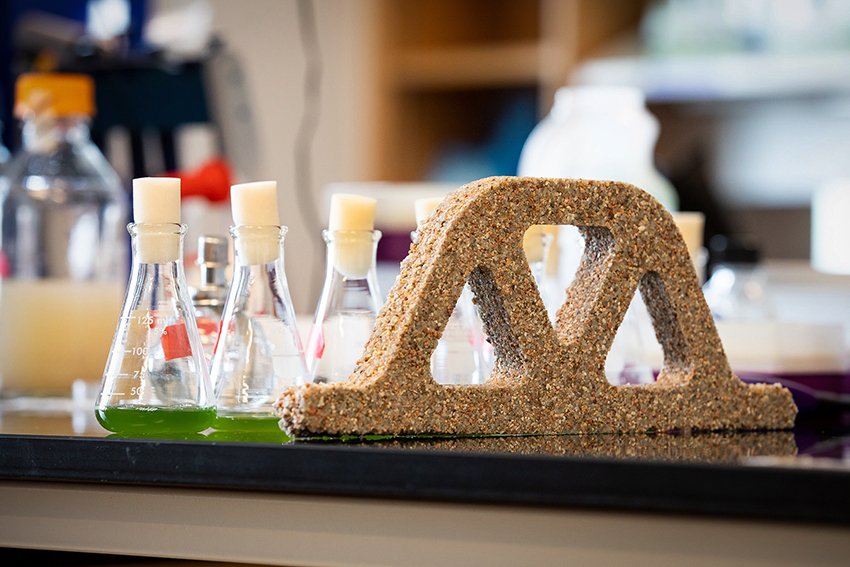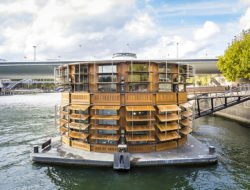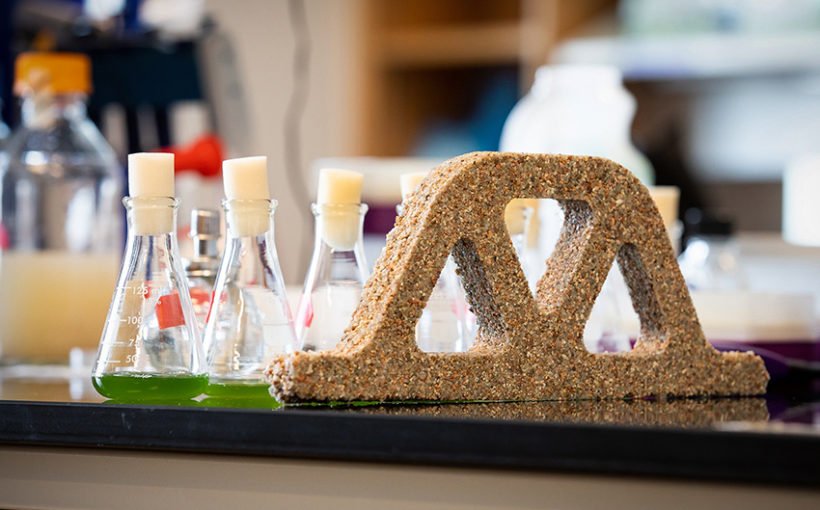What if we used bacteria in construction? We are not in a remake of a bad sci-fi movie, but at the University of Colorado. For a fascinating breakthrough in the world of bioclimatic architecture.
Will we see future urban developments based on techniques that use living matter? One can seriously consider answering this question based on this rather spectacular academic finding: a new building material that reacts through photosynthesis.
Self-healing paste

An arch made by the team of researchers at the University of Colorado, using this new ‘living’ building material. © With Boulder College of Engineering & Applied Science
Concrete is a material that is easy to use, strong, reliable, easy to inspect (which is why it is usually not painted). Then again, it has one enemy and that is water. Which can, in the long run, create cracks. These won’t harm the building in itself but will lead in the long run to corrosion of the reinforcement and superficial desiccation or erosion.
The idea developed by the team of Dr Will Srubar at Colorado University is to inject a component into the concrete that will repair its imperfections. To this ‘improved’ concrete, some components such as biodegradable calcium lactate are added, the peculiarity of which is that it is soluble in water. Other elements of this self-healing paste: gelatine and photosynthetic bacteria. These bacteria capture sunlight and make calcium carbonate, the basic ingredient of concrete.
When this ‘new’ concrete cracks, it releases a capsule that will fill the crevices, protecting the structure from all natural elements. But that’s not all: this live concrete can also absorb the CO2 present in the atmosphere. In recent years bioclimatic architecture has focused on using materials with low environmental impact. And there is no doubt that this ‘living concrete’ will have good days ahead if, however, we manage to transform this academic prowess into an industrial process.





































